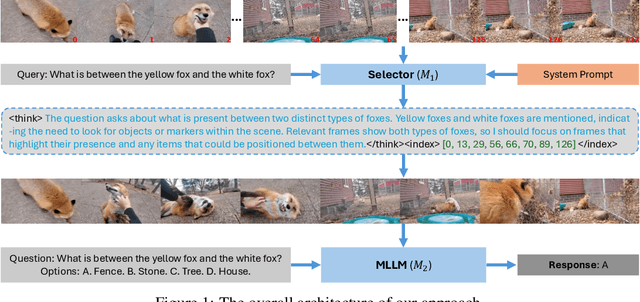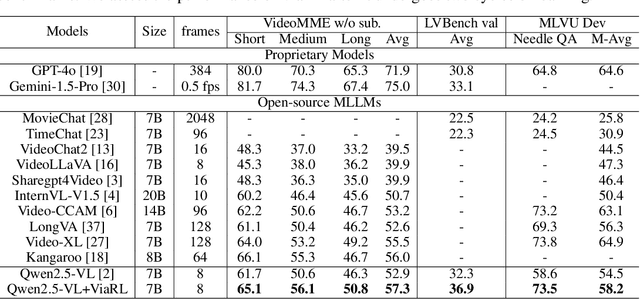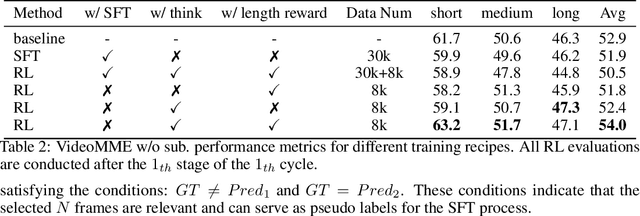Tian Xie
High-Resolution Global Land Surface Temperature Retrieval via a Coupled Mechanism-Machine Learning Framework
Sep 05, 2025Abstract:Land surface temperature (LST) is vital for land-atmosphere interactions and climate processes. Accurate LST retrieval remains challenging under heterogeneous land cover and extreme atmospheric conditions. Traditional split window (SW) algorithms show biases in humid environments; purely machine learning (ML) methods lack interpretability and generalize poorly with limited data. We propose a coupled mechanism model-ML (MM-ML) framework integrating physical constraints with data-driven learning for robust LST retrieval. Our approach fuses radiative transfer modeling with data components, uses MODTRAN simulations with global atmospheric profiles, and employs physics-constrained optimization. Validation against 4,450 observations from 29 global sites shows MM-ML achieves MAE=1.84K, RMSE=2.55K, and R-squared=0.966, outperforming conventional methods. Under extreme conditions, MM-ML reduces errors by over 50%. Sensitivity analysis indicates LST estimates are most sensitive to sensor radiance, then water vapor, and less to emissivity, with MM-ML showing superior stability. These results demonstrate the effectiveness of our coupled modeling strategy for retrieving geophysical parameters. The MM-ML framework combines physical interpretability with nonlinear modeling capacity, enabling reliable LST retrieval in complex environments and supporting climate monitoring and ecosystem studies.
Can LLMs Generate Reliable Test Case Generators? A Study on Competition-Level Programming Problems
Jun 07, 2025Abstract:Large Language Models (LLMs) have demonstrated remarkable capabilities in code generation, capable of tackling complex tasks during inference. However, the extent to which LLMs can be utilized for code checking or debugging through test case generation remains largely unexplored. We investigate this problem from the perspective of competition-level programming (CP) programs and propose TCGBench, a Benchmark for (LLM generation of) Test Case Generators. This benchmark comprises two tasks, aimed at studying the capabilities of LLMs in (1) generating valid test case generators for a given CP problem, and further (2) generating targeted test case generators that expose bugs in human-written code. Experimental results indicate that while state-of-the-art LLMs can generate valid test case generators in most cases, most LLMs struggle to generate targeted test cases that reveal flaws in human code effectively. Especially, even advanced reasoning models (e.g., o3-mini) fall significantly short of human performance in the task of generating targeted generators. Furthermore, we construct a high-quality, manually curated dataset of instructions for generating targeted generators. Analysis demonstrates that the performance of LLMs can be enhanced with the aid of this dataset, by both prompting and fine-tuning.
ViaRL: Adaptive Temporal Grounding via Visual Iterated Amplification Reinforcement Learning
May 21, 2025



Abstract:Video understanding is inherently intention-driven-humans naturally focus on relevant frames based on their goals. Recent advancements in multimodal large language models (MLLMs) have enabled flexible query-driven reasoning; however, video-based frameworks like Video Chain-of-Thought lack direct training signals to effectively identify relevant frames. Current approaches often rely on heuristic methods or pseudo-label supervised annotations, which are both costly and limited in scalability across diverse scenarios. To overcome these challenges, we introduce ViaRL, the first framework to leverage rule-based reinforcement learning (RL) for optimizing frame selection in intention-driven video understanding. An iterated amplification strategy is adopted to perform alternating cyclic training in the video CoT system, where each component undergoes iterative cycles of refinement to improve its capabilities. ViaRL utilizes the answer accuracy of a downstream model as a reward signal to train a frame selector through trial-and-error, eliminating the need for expensive annotations while closely aligning with human-like learning processes. Comprehensive experiments across multiple benchmarks, including VideoMME, LVBench, and MLVU, demonstrate that ViaRL consistently delivers superior temporal grounding performance and robust generalization across diverse video understanding tasks, highlighting its effectiveness and scalability. Notably, ViaRL achieves a nearly 15\% improvement on Needle QA, a subset of MLVU, which is required to search a specific needle within a long video and regarded as one of the most suitable benchmarks for evaluating temporal grounding.
Efficient RL Training for Reasoning Models via Length-Aware Optimization
May 18, 2025Abstract:Large reasoning models, such as OpenAI o1 or DeepSeek R1, have demonstrated remarkable performance on reasoning tasks but often incur a long reasoning path with significant memory and time costs. Existing methods primarily aim to shorten reasoning paths by introducing additional training data and stages. In this paper, we propose three critical reward designs integrated directly into the reinforcement learning process of large reasoning models, which reduce the response length without extra training stages. Experiments on four settings show that our method significantly decreases response length while maintaining or even improving performance. Specifically, in a logic reasoning setting, we achieve a 40% reduction in response length averaged by steps alongside a 14% gain in performance. For math problems, we reduce response length averaged by steps by 33% while preserving performance.
A Mechanism-Learning Deeply Coupled Model for Remote Sensing Retrieval of Global Land Surface Temperature
Apr 10, 2025Abstract:Land surface temperature (LST) retrieval from remote sensing data is pivotal for analyzing climate processes and surface energy budgets. However, LST retrieval is an ill-posed inverse problem, which becomes particularly severe when only a single band is available. In this paper, we propose a deeply coupled framework integrating mechanistic modeling and machine learning to enhance the accuracy and generalizability of single-channel LST retrieval. Training samples are generated using a physically-based radiative transfer model and a global collection of 5810 atmospheric profiles. A physics-informed machine learning framework is proposed to systematically incorporate the first principles from classical physical inversion models into the learning workflow, with optimization constrained by radiative transfer equations. Global validation demonstrated a 30% reduction in root-mean-square error versus standalone methods. Under extreme humidity, the mean absolute error decreased from 4.87 K to 2.29 K (53% improvement). Continental-scale tests across five continents confirmed the superior generalizability of this model.
BiasCause: Evaluate Socially Biased Causal Reasoning of Large Language Models
Apr 08, 2025Abstract:While large language models (LLMs) already play significant roles in society, research has shown that LLMs still generate content including social bias against certain sensitive groups. While existing benchmarks have effectively identified social biases in LLMs, a critical gap remains in our understanding of the underlying reasoning that leads to these biased outputs. This paper goes one step further to evaluate the causal reasoning process of LLMs when they answer questions eliciting social biases. We first propose a novel conceptual framework to classify the causal reasoning produced by LLMs. Next, we use LLMs to synthesize $1788$ questions covering $8$ sensitive attributes and manually validate them. The questions can test different kinds of causal reasoning by letting LLMs disclose their reasoning process with causal graphs. We then test 4 state-of-the-art LLMs. All models answer the majority of questions with biased causal reasoning, resulting in a total of $4135$ biased causal graphs. Meanwhile, we discover $3$ strategies for LLMs to avoid biased causal reasoning by analyzing the "bias-free" cases. Finally, we reveal that LLMs are also prone to "mistaken-biased" causal reasoning, where they first confuse correlation with causality to infer specific sensitive group names and then incorporate biased causal reasoning.
UniGenX: Unified Generation of Sequence and Structure with Autoregressive Diffusion
Mar 09, 2025Abstract:Unified generation of sequence and structure for scientific data (e.g., materials, molecules, proteins) is a critical task. Existing approaches primarily rely on either autoregressive sequence models or diffusion models, each offering distinct advantages and facing notable limitations. Autoregressive models, such as GPT, Llama, and Phi-4, have demonstrated remarkable success in natural language generation and have been extended to multimodal tasks (e.g., image, video, and audio) using advanced encoders like VQ-VAE to represent complex modalities as discrete sequences. However, their direct application to scientific domains is challenging due to the high precision requirements and the diverse nature of scientific data. On the other hand, diffusion models excel at generating high-dimensional scientific data, such as protein, molecule, and material structures, with remarkable accuracy. Yet, their inability to effectively model sequences limits their potential as general-purpose multimodal foundation models. To address these challenges, we propose UniGenX, a unified framework that combines autoregressive next-token prediction with conditional diffusion models. This integration leverages the strengths of autoregressive models to ease the training of conditional diffusion models, while diffusion-based generative heads enhance the precision of autoregressive predictions. We validate the effectiveness of UniGenX on material and small molecule generation tasks, achieving a significant leap in state-of-the-art performance for material crystal structure prediction and establishing new state-of-the-art results for small molecule structure prediction, de novo design, and conditional generation. Notably, UniGenX demonstrates significant improvements, especially in handling long sequences for complex structures, showcasing its efficacy as a versatile tool for scientific data generation.
Langevin Multiplicative Weights Update with Applications in Polynomial Portfolio Management
Feb 26, 2025Abstract:We consider nonconvex optimization problem over simplex, and more generally, a product of simplices. We provide an algorithm, Langevin Multiplicative Weights Update (LMWU) for solving global optimization problems by adding a noise scaling with the non-Euclidean geometry in the simplex. Non-convex optimization has been extensively studied by machine learning community due to its application in various scenarios such as neural network approximation and finding Nash equilibrium. Despite recent progresses on provable guarantee of escaping and avoiding saddle point (convergence to local minima) and global convergence of Langevin gradient based method without constraints, the global optimization with constraints is less studied. We show that LMWU algorithm is provably convergent to interior global minima with a non-asymptotic convergence analysis. We verify the efficiency of the proposed algorithm in real data set from polynomial portfolio management, where optimization of a highly non-linear objective function plays a crucial role.
Logic-RL: Unleashing LLM Reasoning with Rule-Based Reinforcement Learning
Feb 20, 2025Abstract:Inspired by the success of DeepSeek-R1, we explore the potential of rule-based reinforcement learning (RL) in large reasoning models. To analyze reasoning dynamics, we use synthetic logic puzzles as training data due to their controllable complexity and straightforward answer verification. We make some key technical contributions that lead to effective and stable RL training: a system prompt that emphasizes the thinking and answering process, a stringent format reward function that penalizes outputs for taking shortcuts, and a straightforward training recipe that achieves stable convergence. Our 7B model develops advanced reasoning skills-such as reflection, verification, and summarization-that are absent from the logic corpus. Remarkably, after training on just 5K logic problems, it demonstrates generalization abilities to the challenging math benchmarks AIME and AMC.
NatureLM: Deciphering the Language of Nature for Scientific Discovery
Feb 11, 2025



Abstract:Foundation models have revolutionized natural language processing and artificial intelligence, significantly enhancing how machines comprehend and generate human languages. Inspired by the success of these foundation models, researchers have developed foundation models for individual scientific domains, including small molecules, materials, proteins, DNA, and RNA. However, these models are typically trained in isolation, lacking the ability to integrate across different scientific domains. Recognizing that entities within these domains can all be represented as sequences, which together form the "language of nature", we introduce Nature Language Model (briefly, NatureLM), a sequence-based science foundation model designed for scientific discovery. Pre-trained with data from multiple scientific domains, NatureLM offers a unified, versatile model that enables various applications including: (i) generating and optimizing small molecules, proteins, RNA, and materials using text instructions; (ii) cross-domain generation/design, such as protein-to-molecule and protein-to-RNA generation; and (iii) achieving state-of-the-art performance in tasks like SMILES-to-IUPAC translation and retrosynthesis on USPTO-50k. NatureLM offers a promising generalist approach for various scientific tasks, including drug discovery (hit generation/optimization, ADMET optimization, synthesis), novel material design, and the development of therapeutic proteins or nucleotides. We have developed NatureLM models in different sizes (1 billion, 8 billion, and 46.7 billion parameters) and observed a clear improvement in performance as the model size increases.
 Add to Chrome
Add to Chrome Add to Firefox
Add to Firefox Add to Edge
Add to Edge